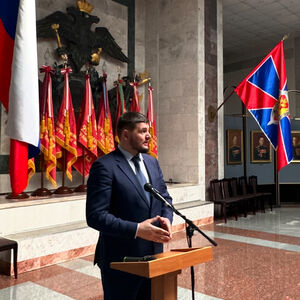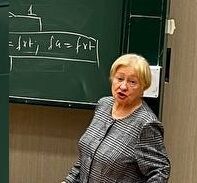Диссертация (1140677), страница 17
Текст из файла (страница 17)
- Pa: Lippincott Williams & Wilkins, 2010. – P.286 –299.21. American Thoracic Society/American College of Chest Physicians ATS/ACCPStatement on Cardiopulmonary Exercise Testing // Am J of respiratory andcritical care. – 2003. – Vol. 167. – P. 211-277.22. Arribas, F. Statistics on the use of cardiac electronic devices andelectrophysiological procedures in 55 ESC countries: 2013 report from theEuropean Heart Rhythm Association (EHRA) / F. Arribas, A. Auricchio, G.Boriani // Europace.
– 2014. – Vol. 16, No 9. – P. i1–i78.http://europace.oxfordjournals.org/content/16/suppl_1/i1.full.pdf+html.23. Assessment ofmyocardial fattyacidmetabolisminatrioventricularsynchronous pacing: analysis of iodine 123-labeled beta-methyl iodophenylpentadecanoic acid SPECT / H. Yoshida, M. Shirotani, M. Mochizuki, K.Sakata // Nucl Cardiol. – 1999.
– 6 (1 Pt 1). – P. 33-40.24. Assessment of Pacemaker Chronotropic Response: Implementation of theWilkoff Mathematical Model / R. A. Freedman, D. L. Hopper, J. Mah, et. al. //PACE. – 2001. –Vol. 24, № 12. –P. 1748-54. 25. Asymmetric thickness of the left ventricular wall resulting from asynchronouselectric activation: a study in dogs with ventricular pacing and in patients with103left bundle branch block / F. W. Prinzen, E. C. Cheriex, T. Delhaas, et al. // AmHeart J.
– 1995. –130(5). – P. 1045-53.26. Asynchronous electrical activation induces asymmetrical hypertrophy of the leftventricular wall / M. F. Van Oosterhout, F. W. Prinzen, T. Arts, et al. //Circulation. – 1998. – 98(6). – P. 588-95.27. Biventricular pacemaker upgrade in previously paced heart failure patients –improvements in ventricular dyssynchrony / K. K. Witte, R. R. Pipes, K.Nanthakumar, J.
D. Parker // J Card Fail. – 2006. – 12 (3). – P. 199-204.28.Biventricular pacing for atrioventricular block and systolic dysfunction / A. B.Curtis, S. J. Worley, P. B. Adamson, and BLOCK HF Trial Investigators // NEngl J Med. – 2013. – 368 (17). – P. 1585-93.29. Brenyo,A. The downside of right ventricular apical pacing / A. Brenyo, I.Goldenberg, A. Barsheshet // Indian Pacing Electrophysiol J.
– 2012. – 12(3). –P. 102-13.30. Brubaker, P. H. Chronotropic incompetence: causes, consequences, andmanagement / P. H. Brubaker, D. W. Kitzman // Circulation. – 2011. – 123 (9).– P. 1010-20.31. Cardiac resynchronization in patients with congestive heart failure and chronicatrial fibrillation: effect of upgrating to biventricular pacing after chronic rightventricular pacing / A. R. Leon, J. M. Greenberg, N. Kanuru, et al. // J Am CollCardiol. – 2002.
–39. – P. 1258-63.32. Cardiovascular outcomes with atrial-based pacing compared with ventricularpacing: meta-analysis of randomized trials, using individual patient data / J.Healey, W. Toff, G. Lamas, et al. // Circulation. – 2006. -114(1). –P. 11-7.33. Carmouche, D. G. The effect of maximum heart rate on oxygen kinetics andexercise performance at low and high workloads/ D.
G. Carmouche, R. S.Bubien, G. N. // Pacing Clin Electrophysiol. – 1998. – 21(4 Pt 1). – P. 679-86.34. Chronic effect of right ventricular pacing on left ventricular rotation synchronyin patients with complete atrioventricular block / M. Hara, M. Nishino, M.Taniike, et al. // Echocardiography. – 2011.
– 28 (1). – P. 69-75.10435. Chronic frequency-adaptive pacemaker therapy in patients with heart failure /G. Haltern, L. Kempa, J. G. Ochs, et al. // Z Kardiol. – 1995. - 84(10). – P. 83443.36. Chronic ventricular pacing at physiological heart rate affects local myocardialblood flow and local wall thickness / M. Van Oosterhout, F. W. Prinzen, Th.Arts, R.
S. Reineman // J Am Coll Cardiol. –1996. – 27 (2s1). – P. 344-344.37. Clinical and quality of life comparison of acceler- ometer, piezoelectric crystal,and blended sensor in DDD-R paced patients with sinus node dysfunction in themode selection trial (MOST) / H. H. Shukla, G. C.
Flaker, A. S. Hellkamp, et al.// Pacing Clin Electrophysiol. – 2005. – 28. – P. 762–70.38. Comparison of right ventricular apex and right ventricular outflow tract septumpacing in elderly with normal left ventricular ejection fraction: long-termfollow-up / H. X. Zhang, J. Qian, F. Q. Hou, et al. // Kardiol Pol.
– 2012. - 70(11). –P. 1130-39.39. De Cock, C. C. Comparison of the haemodynamic effects of right ventricularoutflow-tract pacing with right ventricular apex pacing: a quantitative review / C.C. De Cock, M. C. Giudici, J. W. Twisk // Europace. – 2003. –5. –P. 275– 8.40. Defining the optimum upper heart rate limit during exersize / M. Kindermann,B. Schwaab, N. Finkler, et al. // European Heart Journal. – 2002.
- 23 (16). –P.1301-8.41. Deleterious effect of right ventricular apical pacing on left ventricular diastolicfunction and the impact of pre-existing diastolic disease / F. Fang, Q. Zhang, J.Y. Chan, et al. // European Heart Journal. – 2011. – 32 (15). – P. 1891-9.42. Dell'Orto, S. Sensors for rate responsive pacing / S. Dell'Orto, P.
Valli, E. M.Greco // Indian Pacing Electrophysiol J. – 2004. – 4(3). –P. 137-45.43. Detection of coronary artery disease in patients with a permanent pacemaker / J.P. Van Kuijk, T. M. Valentijn, W. J. Flu, D. Poldermans. // Cardiology. – 2010.– 116 (3). – P. 226-8.a. determinants of outcome in patients referred for evaluation of heart failure/ J. Myers // Ann Intern Med.
– 1998. –129. –P. 286-93.10544. Detrimental ventricular remodeling in patients with congenital complete heartblock and chronic right ventricular apical pacing / J. B. Thambo, P. Bordachar, S.Garrigue, et al. // Circulation. – 2004. - 110(25). – P.
3766-72.45. Diagnostic and prognostic value of rapid pacing stress echocardiography for thedetection of coronary artery disease: influence of pacing mode and concomitantantiischemic therapy (Final results of multicenter study Pol-RAPSE) / E.Ploñska-Gosciniak, A. Kleinrok, A. Gackowski, et al.
//Echocardiography. –2008. – 25(8). – P. 827-34.46. Dual-chamber pacing or ventricular back-up pacing in patients with animplantable defibrillator: the Dual Chamber and VVI Implantable Defibrillator(DAVID) trial / B. L. Wilkoff and DAVID Trial Investigators. // JAMA. –2002.– 288 (24). – P. 3115–23.47. Effect of long-term right ventricular apical pacing on left ventricular perfusion,innervation, function and histology / M.
A. Lee, M. W. Dae, J. J. Langberg, etal. // J Am Coll Cardiol. – 1994. – 24(1). – P. 225-32.48. Effects of asynchronous ventricular activation on myocardial adrenergicinnervation in patients with permanent dual-chamber pacemakers. An I123metaiodobenzylguanidine cardiac scintigraphic study / E. N. Simantirakis, V. K.Prassopoulos, S.
I. Chrysostomakis, et al. // European Heart Journal. – 2001. –22. – P. 323-32.49. Effects of physiologic pacing versus ventricular pacing on the risk of stroke anddeath due to cardiovascular causes / S. J. Connolly, C. R. Kerr, M. Gent, et al. //N Engl J Med. – 2000. – 342.
– P. 1385–91.50. ESC Committee for Practice Guidelines. ESC Guidelines for the diagnosis andtreatment of acute and chronic heart failure 2012 // European Heart Journal. –2012. – 33. –P. 1787-1847.51. ESC Guidelines on cardiac pacing and cardiac resynchronization therapy 2013. The Task Force on cardiac pacing and resynchronization therapy of theEuropean Society of Cardiology (ESC). Developed in collaboration with theEuropean Heart Rhythm Association (EHRA) //European Heart Journal. – 2013.106– 34. –P. 2281–2329.52. ESC/EACTS Guidelines on myocardial revascularization – 2014.The TaskForce on Myocardial Revascularization of the European for Cardio-ThoracicSurgery (EACTS) //European Heart Journal. – 2014. –35 (37). –P. 2541-19.53. Evaluation by cardiopulmonary exercise test of DDDR versus DDD pacing./ A.Capucci, G. Boriani, S.
Specchia, et. al. // Pacing Clin Electrophysiol. – 1992. –15 (11 Pt 2). – P. 1908-13.54. Evolution of pacing for bradycardias: sensors / C. P. Lau, H. F. Tse, A. J.Camm, S. S. Barold // European Heart Journal Supplements. – 2007. - 9(Supplement I). – P. I11–I22.55. Exercise responses of elderly patients with diastolic versus systolic heart failure/P. H. Brubaker, C. T. Marburger, T. M. Morgan, B. Fray, D.W. Kitzman // MedSci Sports Exerc.
– 2003. – №35. – P. 1477–85.56. Exercise and heart failure: a statement from the American Heart AssociationCommittee on exercise, rehabilitation, and prevention / I. L. Piña, C. S. Apstein,G. J. Balady, et al. // Circulation. –2003. –107 (8). – P. 1210-25.57. Five-year follow-up findings from a randomized controlled trial of cardiacrehabilitation for heart failure / J.
Austin, W. R.Williams, L. Ross, et al. // Eur JCardiovasc Prev Rehabil. – 2008. – 15. –P. 162 – 7.58. Froelicher, V. F. Manual of exercise testing. / Froelicher V.F., Myers J. –Mosby, 2007. – P.18-48, 211-231.59. Hayes, D. L. Standardized informal exercise testing for programming rateadaptive pacemakers / D. L. Hayes, L. Von Feldt, S. T. Higano // PACE. – 1991.- 14. – P. 1772.60. Heart failure and echocardiographic changes during long-term follow-up ofpatients with sick sinus syndrome randomized to single –chamber atrial orventricular pacing / J. C.
Nielsen, et al. // Circulation. –1998. – 97(10). – P. 98795.61. Heart rate during exercise: what is the optimal goal of rate adaptive pacemakertherapy? / T. Lewalter, W. Jung, D. MacCarter, et. al. //Am Heart J. – 1994. –127107(4 Pt 2). – P. 1026-30.62. How to program rate responsive pacemaker / E. M. Greco, S.
Guardini, M.Ferrario, S. Romano // Pacing Clin Electrophysiol. – 2000. –23(2). –P. 165-73.63. Impact of rate-modulated pacing on quality of life and exercise capacity –Evidence from the Advanced Elements of Pacing Randomized Controlled Trial(ADEPT) / G. A. Lamas, J. D. Knight, M. O. Sweeney, et. al. // Heart Rhythm. –2007. – 4. –P. 1125-32.64.
Impaired chronotropic and vasodilator reserves limit exercise capacity in patientswith heart failure and a preserved ejection fraction / B. A. Borlaug, V.Melenovsky, S. d. Russell, et al. // Circulation. – 2006. –114. – P. 2138-47.65. Influence of permanent right ventricular pacing on cardiorespiratory exerciseparameters in chronic heart failure patients with implanted cardioverterdefibrillators / M. Wonisch, P. Lercher, D. Scherr, et al. //Chest. – 2005. –127(3). – P.
787-93.66. Karpawich, P. P. Altered cardiac histology following apical right ventricularpacing in patients with congenital atrioventricular block / P. P. Karpawich, R.Rabah, J. E. Haas // Pacing Clin Electrophysiol. – 1999. – 22 (9). – P. 1372-7.67. Kay, G. N. Quantitation of chronotropic response: comparison of methods forrate-modulating permanent pacemakers / G. N.
Kay //J Am Coll Cardiol. –1992. – 20 (7). – P. 1533-41.68. Khan, M. N.Chronotropic incompetence as a predictor of death amongpatients with normal electrograms taking beta blockers (metoprolol or atenolol)/M. N. Khan, C. E. Pothier, M. S. Lauer //Am J Cardiol. – 2005. -96. – P. 132833.69. Lau, C. P. Comparative hemodynamic studies between different rate adaptivemodes.
















